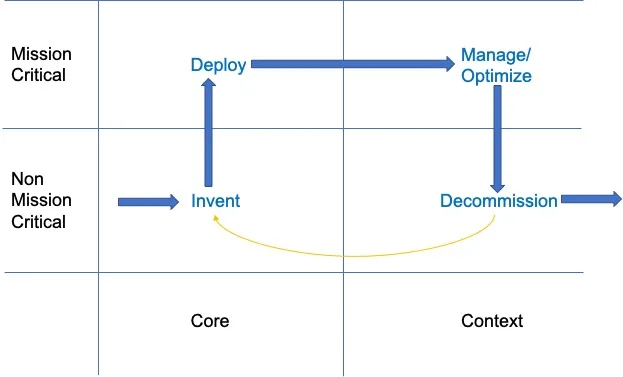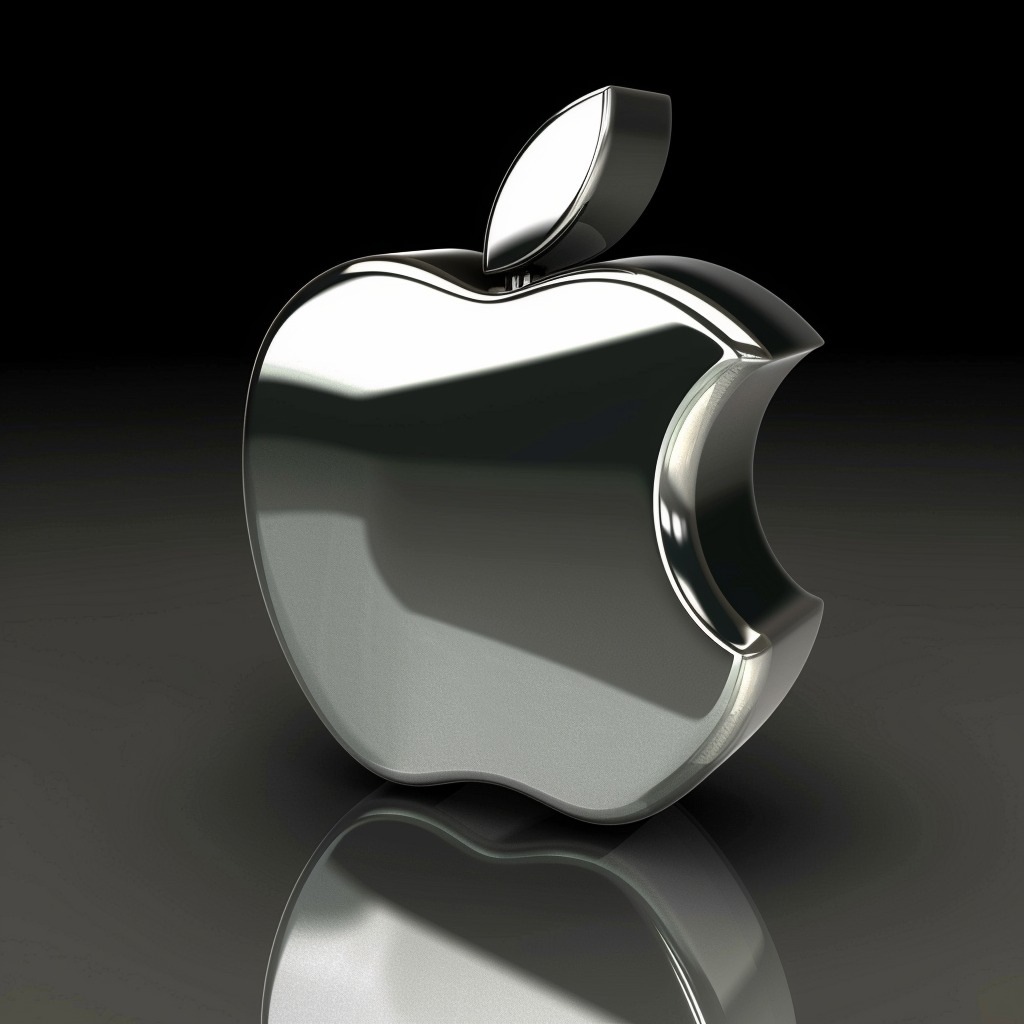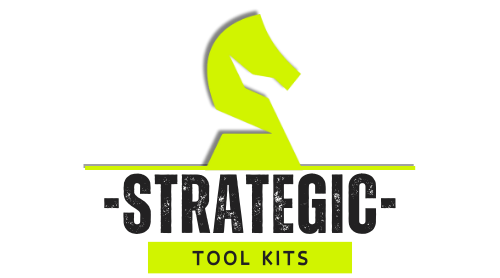Core and Context is a distinction that separates the few activities that a company does that create true differentiation in customers’ eyes (CORE) from everything else that a company needs to do to stay in business (CONTEXT).
“Core” refers to the innovative processes that businesses undertake to create differentiation that wins customers. “Context” refers to all other company practices businesses implement.
The Concept of ‘Core’ vs ‘Context’
In his book ‘Dealing with Darwin‘ Geoffrey Moore, Chairman Emeritus at TCG Advisors, proposed the concept of ‘core’ and ‘context’ as a way to prioritize growth strategies, but the concept can also be extended to ERP customization.
‘Core’ is any activity that creates sustainable differentiation. It is what a company invests its time and resources in that its competitors do not. It is what allows a business to make more money and attract more customers than its competitors
‘Context’ is any activity that does not create differentiation. It brings in money but is not what makes the company unique. An example of core business is Tiger Woods’ golfing, and an example of context business is Tiger Woods’ advertising work, as Moore explained in interview.

Trend – Matrix Clockwise
Products and capabilities tend to rotate around this matrix clockwise:
- New Products start in the bottom left quadrant, since the reason for their existence is to create differentiation for customers but have no P&L impact initially. This is where the Minimum Viable Product mindset of the Lean Start-up rules, with the focus on learning and innovation, not worrying about the robustness needed to scale successfully
- Successful new products will swell in profitability, becoming mission-critical. The management focus changes from innovation to the hard-nosed practicality needed to deploy this innovation robustly at scale across the entire company
- Nothing lasts forever. Customer needs evolve and competitors are racing hard to match your creation. The innovation stops differentiating and becomes a hygiene factor. The management approach needed is to manage the product – the tactical tweets and turns needed to get the most out of a big product differentiation at full maturity
- Finally, with the innovation commoditized, it ceases to matter for customers or to the company. Then is the time to OFFLOAD, focusing on cost reduction, standardization, and outsourcing to companies where this activity would be core to them and could give it full attention
The company needs to constantly fight organizational entropy, actively removing activities from context and adding to the core.
Also, innovation is important for competitive advantage, brand development, and growth Innovation and corporate governance are interwoven and are at the heart of each organization. (Moore, 2005).
When is it useful?
This concept is useful during the strategic analysis of your portfolio. Analyze your products, channels, customer segments, or geographies to identify which of the four quadrants it is in. Then check – do you have the right management approach for each one?
Secondly, once you have identified your strategy, apply this framework to it as a checklist to identify how to manage the different initiatives that are launched.
(Real-world) Examples
An example is customer data analysis in an FMCG company.
- INVENT. Initially, a “skunkworks” team was set up in one market, and they played around with different approaches to CRM, matching insight with big data analysis to identify patterns. After a year of experimenting, they learned which digital prompts triggered a consumer purchase
- DEPLOY. The company dedicated a separate team to deploying this in all major markets. They managed IT projects to ensure they worked with local market systems, ran training workshops on localization for marketers, and planned reinforcing communication from the Marketing Director. Initially, they deployed some of the insights to realize quick wins and build credibility with in-market teams. Metrics were established to course correct and identify markets with best practices to share.
- MANAGE. Over time, customer data analytics was regarded as just another tool in the marketer’s armory. Competitors were doing it, it was taken for granted that every digital touchpoint was captured in a unified big data platform. Even though it was mission-critical for the company for the data analytical machine to run well, it no longer created much edge. In response, the company centralized the team, building one shared service center to manage the workflows as efficiently as possible
- OFFLOAD. Finally, the company was approached by its cloud hosting company looking to enhance its value-add. Because the FMCG company had invested in standardizing and simplifying all the processes, it was very cost-efficient to hand over, there was no “fat” permanently baked into the outsourcing margins.
To illustrate more the practical application of this framework, consider presenting more real-world examples and case studies:
Example 1: Apple Inc.

Apple’s core activities include design and innovation in consumer electronics. They focus heavily on R&D to create differentiated products like the iPhone and MacBook.
Context activities such as manufacturing are outsourced to third parties like Foxconn, allowing Apple to concentrate on its core strengths.
Example 2: Amazon
Amazon’s core activities revolve around its e-commerce platform and customer-centric innovation. They invest significantly in technology and logistics to enhance customer experience.
Context activities like data storage are managed through Amazon Web Services (AWS), which also serves as a core activity by providing a revenue stream.
Balancing Core and Context for Sustainable Growth
One of the main challenges in implementing the core-context framework is maintaining the right balance between core and context activities. Companies need to regularly review and adjust their strategies to ensure they are not overemphasizing context at the expense of innovation, nor neglecting context in a way that results in operational inefficiencies.
This requires a proactive approach to monitoring market trends and customer needs, and making necessary adaptations to stay competitive.
Companies that focus on core activities that drive innovation and customer value can achieve sustainable growth over the long term. This approach ensures they continue to meet evolving market demands and maintain a competitive edge.
Crucially, embedding the core-context mindset into the organizational culture is key – employees should understand the importance of both core and context activities, and align their collective efforts towards innovation and efficiency in support of the company’s strategic goals.
Conclusion
The core-context framework proposed by Geoffrey Moore offers a valuable lens for organizations to prioritize their activities and strategic initiatives. By distinguishing between the innovative “core” activities and the necessary but less differentiating “context” activities, companies can align their resources and management approaches to drive sustainable growth.
The key benefits of this framework include optimizing resource allocation, enabling agility, and fostering a culture of innovation.
Implementing the core-context framework requires diligent analysis and a willingness to make tough decisions about offloading context activities and reinforcing core competencies.
Real-world examples like Apple and Amazon illustrate how leading companies have successfully leveraged this framework to drive their strategic priorities and maintain a competitive edge, even as the business landscape continues to evolve.
- Source: Dealing with Darwin: How Great Companies Innovate at Every Phase of their Evolution. Geoffrey A. Moore. Strategic Direction. ISSN: 0258-0543. Article publication date: 28 August 2007.

